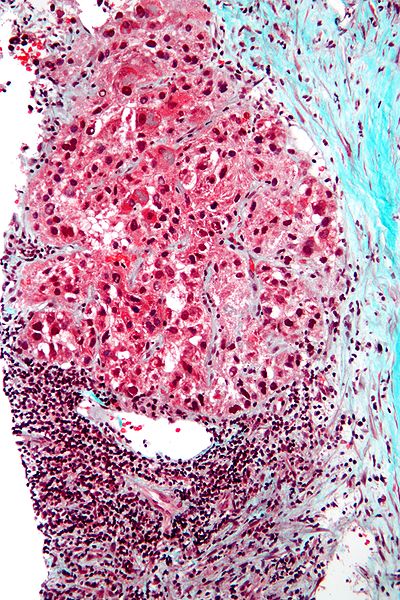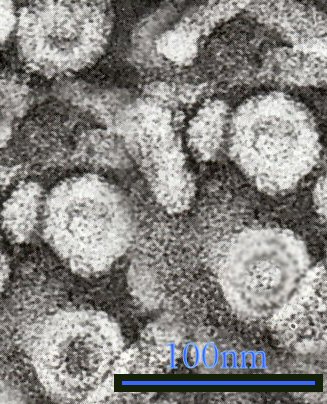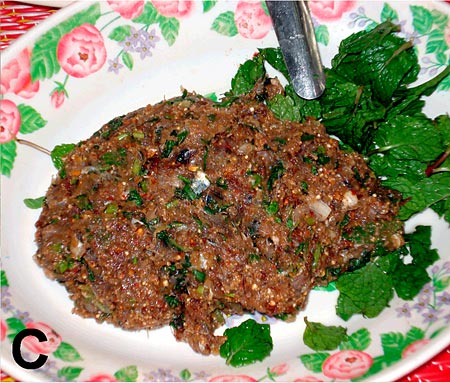Cancer Statistics, Liver Cancer and Bile Duct Cancer in Thailand
Cancer is an important cause of illness and mortality around the world. However, cancer incidence varies widely. Some types of cancer are more common in some countries or areas around the world. Environmental factors undoubtedly play an important role.
There are 4 tables below (2 tables next to each other on desktops). The first and second table (as a comparison) give cancer incidence (cases per 100,000 per year) in the United States of America, on the left for males, on the right for females. Races are combined.
The third and fourth table give cancer incidence in Thailand, on the left for males, on the right for females.
| Incidence of most common cancers in males (all races) 2020 for United States [National Cancer Institute USA/ Bing Copilot ; excluding non-melanoma skin cancer] |
|
| Prostate : | 98.6 |
| Lung and Bronchus : | 59.6 |
| Colon and Rectum : | 38.7 |
| Urinary Bladder : | 22.5 |
| Melanoma (estimate) : | 21* |
| Non-Hodgkin Lymphoma : | 19.2 |
| Kidney and Renal Pelvis : | 15.7 |
| Leukemia(s) : | 16.9 |
| Oral Cavity : | 17.2 |
| Pancreas : | 13.8 |
| Liver and Intrahepatic Bile Duct : |
10.7 |
| All Sites : | 470 |
| Incidence of most common cancers in females (all races) 2020 for United States [National Cancer Institute USA/ Bing Copilot ; excluding non-melanoma skin cancer] |
|
| Breast : | 125.9 |
| Lung and Bronchus : | 36.0 |
| Colon and Rectum : | 25.5 |
| Corpus Uteri : | 24.7 |
| Thyroid : | 16.6 |
| Non-Hodgkin Lymphoma : | 15.5 |
| Melanoma : | 14.8 |
| Pancreas | 11.9 |
| Ovary : | 11.6 |
| Kidney and Renal Pelvis : | 12.3 |
| Liver and Intrahepatic Bile Duct (estimate) : |
3-4* |
| All Sites : | 413 |
| Age-standardized incidence rates (ASR) of all cancers in males, 2016-2018, National Cancer Institue , Cancer in Thailand, Vol X, 2016-2018. [Estimated Rates, latest published online 2023] Between brackets incidence 2013-2015. |
|
| Liver and Bile Duct : | 33.2 (33.9) |
| Trachea, Lung and Bronchus : | 22.8 (23) |
| Colon and Rectum | 18.7 (16.2) |
| Prostate : | 7.7 (7.5) |
| Non-Hodgkin Lymphoma : | 6.5 (5.7) |
| Oral Cavity : | 5.7 (5.5) |
| Leukemia(s) : | 5.3 (5.2) |
| Esophagus : | 4.1 (4.1) |
| Urinary Bladder : | 4.0 (4.0) |
| Skin: | 4.0 |
| All Sites : | 147.5 (143.8) |
| Age-standardized incidence rates (ASR) of all cancers in females, 2016-2018, National Cancer Institue, Cancer in Thailand, Vol X, 2016-2018. [Estimated Rates, latest published online 2023] Between brackets incidence 2013-2015. |
|
| Breast : | 34.2 (31.4) |
| Liver and Bile Duct : | 12.2 (12.9) |
| Cervix Uteri : | 11.1 (11.7) |
| Colon and Rectum : | 13.3 (11.2) |
| Trachea, Lung and Bronchus : | 11.5 (10.9) |
| Ovary : | 6.0 (5.7) |
| Thyroid : | 6.9 (5.6) |
| Non-Hodgkin Lymphoma : | 5.2 (4.5) |
| Corpus Uteri | 6.7 (4.5) |
| Leukemia : | 4.5 |
| All Sites : | 141.8 (134.2) |
Some striking similarities and differences can be noted :
1) The incidence of cancer is much higher for both males and females in the United States than in Thailand. In the U.S. there was lower incidence for males, and approximate status quo iin cancer for females compared to 5 years earlier (data not given). Strikingly, the 4 most common cancers in menin the U.S. had a reduced incidence in this latest registration period.
2) Most common cancers are the same in both Thailand and U.S.A.: lung cancer, colon and rectum cancer, breast cancer, uterus cancer. Prostate cancer has quite a lower incidence in Thailand though.
3) Liver and bile duct cancer combined are the most common cancer in Thailand, while it is not among the 10 most incident cancers in the United States. Incidence is rising though in the U.S. in both males and females compared to 5 years ago (about 20 %)
4) Compared to 5 years earlier, the type of most prevalent cancers hardly changes. That is, the 'Top 10' basically remains the same in both countries.
5) Incidence of breast cancer in females in Thailand increased from 20.9/100,000 in the 2001-2003 time span to 28.5/100,000 in the 2010-2012 time span. In this latest review it has risen to 31.4/100,000.
6) Comparing the last available survey for Thailand (2016-2018) vs. the prior period (2013-2015) : (we did not try to calculate statistical significance) However, there seems to be an increase in colon and rectum cancer in both males and females. Overall cancer incidence in Thailand is higher for both males and females. Breast cancer incidence in females keeps on rising. Liver and bile cancer incidence rates are still very high, but maybe have a tendency to decrease.

Intermediate magnification micrograph of hepatocellular carcinoma the most common form of primary liver cancer.
Source image : Wikipedia
We can add that liver cancer is also more prevalent in other South-East Asian countries. Apparently there is a regional reason causing or contributing to liver cancer in this area of the world.
We will attempt to point out different reasons why liver cancer (and bile duct cancer) are more common in Thailand, and give some soft advice for foreigners visiting the country.
Possible risk factors and causes of liver cancer (and bile duct cancer) include :
1) Hepatitis B infection
2) Hepatitis C infection
3) Alcohol Overconsumption, Cirrhosis
4) Aflatoxin B1 (a mold) contaminated food
5) Liver Fluke parasite infection (particularly in Northeastern Thailand)
1) Hepatitis B infection

Transmission electron micrograph of Hepatitis B virus particles from blood.
Source image : Wikipedia
Hepatitis B incidence :
According to the World Health Organization the whole of South-East Asia is part of a high endemicity area for hepatitis B. This mains 70 to 90 % of the population become Hepatitis B-infected before the age of 40, and 8 to 20% of people are Hepatitis B carriers.
[Most of Europe and North America is in a low prevalence area, with less than 0.5% Hepatitis B carriers]
According to WHO, infection rates are (were) very high in infants in Thailand, and continue throughout early childhood. The prevalence of HBsAg in serum may exceed 25%. Neonatal infection is very frequent. The data for Thailand surely have improved lately though (see below). At the beginning of its Hepatitis B Guide, WHO seems to indicate that its pages were written in 2002.
As a general rule the most important mode of HBV transmission globally is perinatal, from mother to newborn baby. If a pregnant woman is a Hepatitis B Virus carrier and HBeAg-positive, there is a 90% likelihood of the newborn baby to be infected and become a carrier.
Otherwise HBV is transmitted through skin or digestive contact with infected blood, body fluids and by sexual intercourse.
Many babies infected around birth, will develop liver failure or liver cancer later in life. For that reason, prevention of perinatal (around birth) vaccination of children, is paramount, and Thailand has stepped up to this challenge.
Immunization Schedule :
Hepatitis B vaccination at birth is now part of immunization schedule for Thai children. According to WHO-UNICEF estimates immunization coverage for Hepatitis B at the present time is 98% (really pretty good, we think). From what we saw on the WHO site, immunization in Thailand started around 1992. While this is quite a while back, it means that most adults were never vaccinated, and that the prevalence of Hepatitis B in the general adult population is still very high (but likely declining over ensuing decades).
See immunization schedules for many other disesases in Thailand (WHO)
Hepatitis B infection and Liver Cancer
According to a much quoted study from Taiwan (from the 1970s), the risk of developing liver cancer is 200 times higher among people with chronic hepatitis B virus, as compared to people without infection. Apparently there is a direct interaction between the hepatitis virus, and the genetic material of the liver cells. The vast majority of liver cancer occurs in people who have been infected with hepatitis B for many years.
While Hepatitis B incidence has declined in recent years in youngsters due to the immunization schedule mentioned, Hepatitis B is still much prevalent in the adult population, and liver cancer remains a major health hazard in Thailand.
2) Hepatitis C infection.
Hepatitis C prevalence was 2.2% in military conscripts in Thailand (Jatapai A. et al, 2010).
Hepatitis C is less prevalent than Hepatitis B in Thailand. Hepatitis C is associated with the development of liver cancer, often many years after first exposure, and most likely in people who have developed liver cirrhosis.
3) Alcohol.
Cirrhosis caused by chronic alcohol consumption is the most common association with liver cancer in the developed world. Autopsies on alcoholics often find evidence of unsuspected liver cancer at time of death. [Alcoholics are more likely to die from other causes, before the liver cancer strikes them]. Overuse of alcohol certainly plays also a role in liver cancer epidemiology in Thailand, though we will not try to provide a proof for this assumption.
4) Aflatoxin B1.
Aflatoxin B1 is a very potent liver cancer-promoting chemical. It is a product of the mold Aspergillus Flavus, and can be found in food stored in a hot and humid environment. Foods such as peanuts, rice, soybeans, corn and wheat are susceptible.
Studies have shown that concurrent infection with the hepatitis B virus during aflatoxin exposure increases the risk of hepatocellular carcinoma.
According to one study we found, the direct measurement of aflatoxin-albumin adducts in sera from human subjects in Thailand suggests that aflatoxin intake is relatively low. (Wild CP et al. Toxicol Lett 1992 ; 64/65 : 455 -61.)
5) Liver Fluke infestation by Southeast Asian Liver Fluke or Opisthorchis Viverrini
Cholangiocarcinoma is a cancer of the bile ducts which drain bile from the liver into the small intestine.
Southeast Asian Liver Fluke (Opisthorchis Viverrini) infection is particularly prevalent in the Northeast of Thailand. Liver flukes are found in many species of freshwater fish in the Northeast. Fish is often consumed fresh and uncooked in this area of Thailand. According to the Udon Thani Regional Cancer Centre (some years ago), as many as six million people in Northeastern Thailand, were afflicted with a liver fluke infection.

Dish made of raw fish accompanied by rice and vegetables. This dish is a dietary staple of many northeastern Thai villagers and is a common source of infection with Liver Fluke.
Source image : Wikipedia
Statistics from the Ministry of Public Health in Thailand show that 28,000 people die from the liver fluke disease every year, which is an average of 76 people a day. This statistic is quite stunning, and seems to also include patients dying from acute and chronic cholangitis (infection of bile tract), not just from liver cancer. Provinces in Thailand with high rates of cholangiocarcinoma are Sakon Nakhon, Roi Et, Kalasin, Mahasarakham, Udon Thani, Yasothorn, Nakhon Phanom and Amnat Charoen, and Phrae. [Data form seminar at Khon Kaen University, August 2009]
On top of that, consumption of pla ra (fermented fish), pla jom (pickled fish) or nam (fermented pork) also puts one at increased risk of cholangiocarcinoma because of the toxic chemical nitrosamine found in these foods (you can see them also around Bangkok).
Conclusions :
Looking through the possible rish factors and/or causes of liver cancer, we think endemic Hepatitis B Infection and Liver Fluke parasite infection are the two most important contributing factors. Hepatitis C, alcoholism, cirrhosis for other reasons, and Aflatoxin B1 ingestion, contribute to the problem to a lesser extent.
At least two important advices can be given :
We would think that immunization for Hepatitis B should be considered, especially if one plans on staying in Thailand for extended periods. Risk of Hepatitis B can be reduced substantially be avoiding direct contact with blood and avoiding unprotected sexual contact with Hepatitis B carriers (between 8 and 20% of the adult population). In this regard, it is good to note that it is easier to get infected by Hepatitis B than by HIV.
It is equally important that visitors avoid going completely local in their choice of food. Avoid substantial risk of developing bile duct cancer, by not eating freshwater uncooked fish or the different types of fermented fish and pork products.
Sources : National Cancer Institute of Thailand : Cancer in Thailand Vol. VIII, 2010-2012, published 2016.

